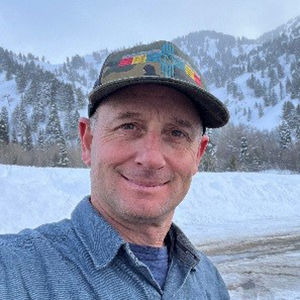Garrett Altmann is the Western Restoration Program Manager at the Environmental Policy Innovation Center (EPIC) where he supports tribes and communities access federal funding for fish passage projects. Prior to joining EPIC, he served as the GIS Coordinator and Project Manager for the Forestry Department at Santa Clara Pueblo. Garrett is versed at integrating Indigenous Knowledge and Nature-based Solutions in projects to maximize ecosystem services and develop resilience to climate variability. Garrett has coordinated watershed restoration projects with federal, state, tribal, and non-governmental organizations and continues to innovate in projects that maximize nature, mitigate disasters, and restore aquatic connectivity. He holds a Bachelor's in Geography from UC Santa Barbara, and an M.Sc. in Natural Resources Management from the University of Alaska Fairbanks.
Santa Clara Creek consists of a 23-mile, west-to-east trending stream that flows from the Jemez mountains, down into the Rio Grande in northern New Mexico. Since 1998, three devastating wildfires have impacted the 32,000-acre Santa Clara Creek Watershed, which serves as a primary source of water, cultural identity and spiritual sanctuary to the Santa Clara Native American Tribe. The most devastating of these events was the 2011 Las Conchas Fire which burned 60% of the watershed and resulted in widespread flooding and devastating debris flows which resulted in 100% fish kill within the watershed. Santa Clara Pueblo has since coordinated a collaborative effort to mitigate fire and flood damages by leveraging federal, state, and non-governmental resources. Starting at the watershed boundary, the Tribe implemented a 'top-down approach' to treating the watershed after it became apparent that mitigating erosion at the source was needed before restoration efforts could be sustained along the creek. After 12-years and over 5,000 hand-built erosion structures completed in 26-tributaries, creek restoration efforts have commenced since 2018. This presentation will examine these efforts and how we are working to develop a new ‘naturalistic model for water resources development’ while achieving the goal of restoring native Rio Grande Cutthroat Trout and long-term resilience to this watershed.

Support the people who manage our natural areas and protect biodiversity in perpetuity.